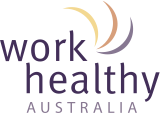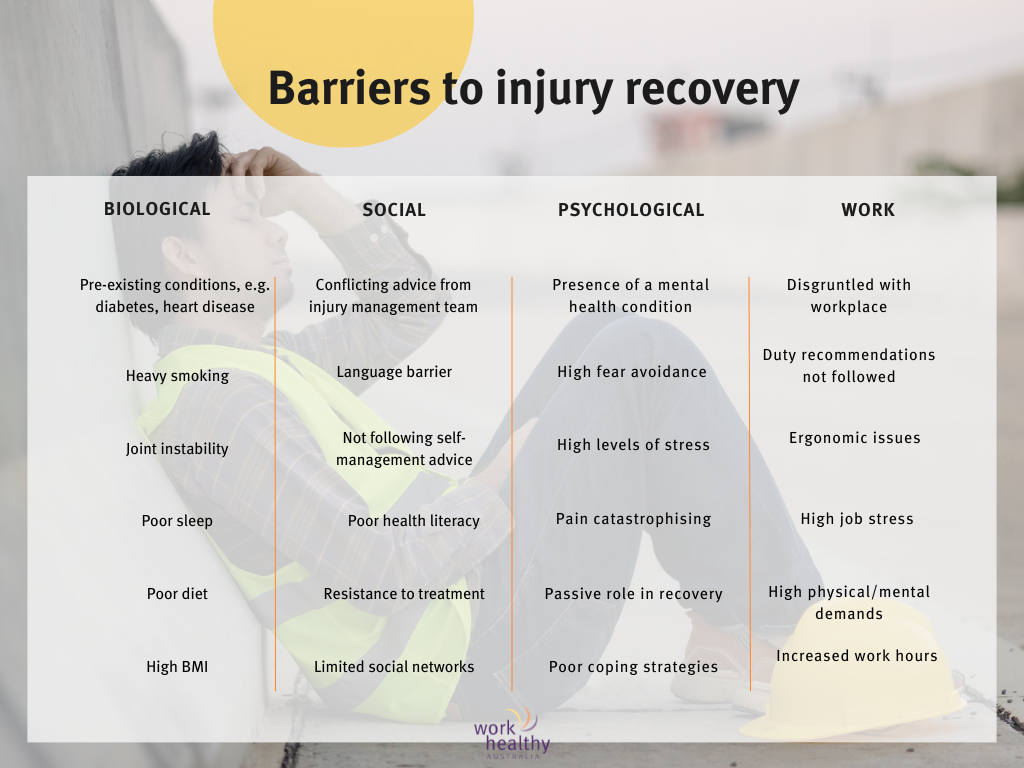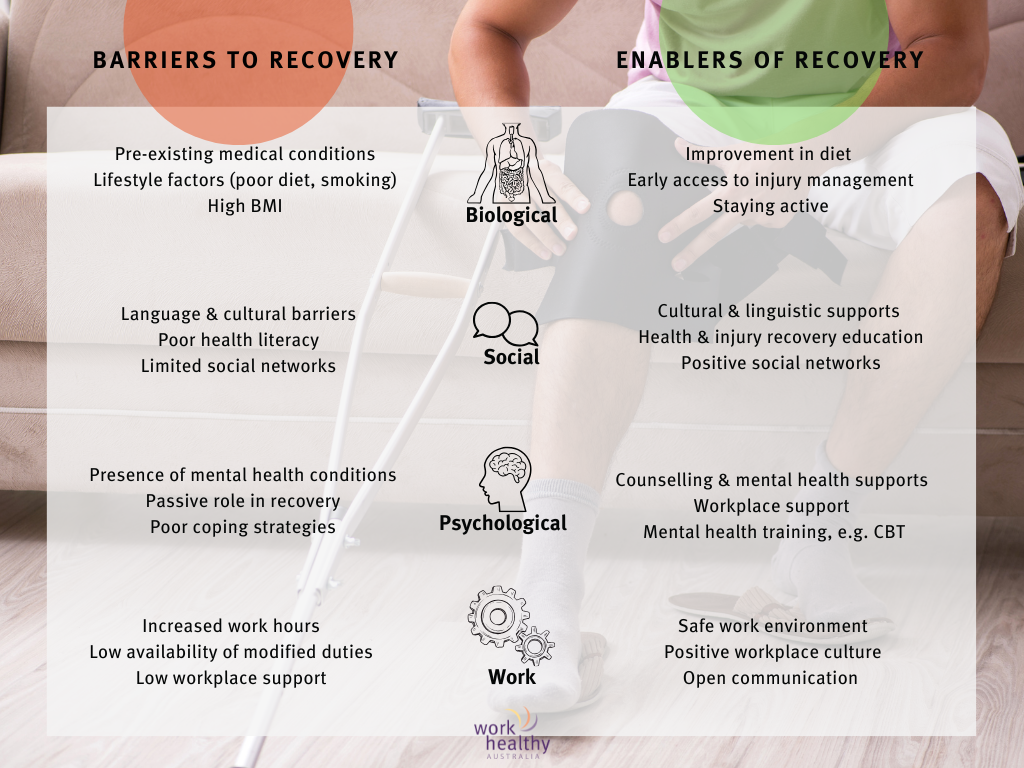
Have you even wondered why recovery from workplace injury can vary greatly? Two workers with the same injury might have very different recovery journeys. This can depend on the approach to treatment, biopsychosocial factors, and work environment. Prompt first aid, a good support network and adherence to rehabilitation contributes to a speedy recovery for one worker. However, another worker with the same injury who experienced delayed treatment, high levels of stress, and lack of modified duties might experience a delayed recovery.
Here, we unpack the term “barriers to recovery” and help you understand how it can provide clues to what’s happening in your broader workforce.
Definition
The term “barriers to recovery” is frequently used in workers’ compensation and injury management fields. A barrier to recovery can be any internal or external factor that impacts, delays or aggravates the recovery from an injury.
There are multiple barriers to injury recovery: those that stem from the worker’s environment at home and at work, psychological barriers, pre-existing medical conditions and more. To facilitate understanding, we can group them into four main categories: biological, social, psychological and work-related. Below are some examples of each type:
What can barriers to recovery tell us?
Barriers to recovery data can give unique insights into what’s going on with your workforce. For example, by analysing injury data and barriers to recovery, you might realise that there are high numbers of workers reporting poor sleep and fatigue, are disgruntled with the workplace, or even a high incidence of mental health conditions.
Once barriers to recovery are identified, it becomes easier to devise interventions and solutions to support the workforce, and influence trends that might be impeding the health and wellbeing of your workforce. Many barriers to recovery are modifiable and present opportunities for change.
Case study: Barriers to recovery in practice
Company A
Company A is a large food processing plant located in a regional area. When analysing their injury data over one year, we identified their top five barriers to recovery:
- Language barrier
- High physical work demands
- Not physically suited to the role
- Not seen in a timely fashion
- Disgruntled with the workplace
This organisation employs a large contingent of migrants and temporary overseas workers. The majority of them have limited English language skills, thus making communication about safety, injury, and rehabilitation challenging. One strategy recommended for this organisation would be more investment in language and cultural resources for their workforce. Using interpreters, translating safety information in the main languages spoken on-site, and utilising a buddy system are ways of improving communication and understanding.
When categorising their barriers, it is apparent that the work environment is significantly influencing recovery. Recommendations to address the barriers such as ‘high physical demands’ and ‘not physically suited to the role’ include reviewing recruitment practices to ensure task analysis and pre-employment screenings are interlinked. Work hardening for workers new to manual work is also recommended. To address the trend showing that there is a delay in treatment time for a portion of workers, our onsite workplace health provider would work closely with supervisors and managers to educate the workforce on the importance of early intervention and treating niggles before they become a serious injury.
The barriers to recovery report for Company A also highlights that there is substantial employee dissatisfaction at the company. These barriers require a deeper investigation into the organisational processes and culture, to ascertain what is causing them and what can be done to rectify them.
Company B
Company B is an organisation in a metropolitan area, in local government. Their top five barriers to recovery were quite different from Company A:
- High levels of stress
- Not following home rehabilitation program
- Musculoskeletal pain in multiple body regions
- Sports / exercise outside of work
- Second job
The main barrier to recovery for injured workers at Company B is ‘high levels of stress’, which could indicate work-related issues or outside factors. Further analysis is needed to determine why stress is impacting so many injured workers. This data should be viewed as the impetus for investigation and change.
Workers not adhering to their rehabilitation programs is the second-most common barrier to recovery at this organisation. Could there be a perceived lack of understanding of the importance of rehabilitation? Perhaps workers have low self-efficacy, or perhaps they lack the time outside of work for rehabilitation? A recommendation to Company B would be to create space for open communication, and to see an understanding of the work/life balance within their workforce.
What can organisations do?
Here are some tips to help your organisation manage barriers to recovery:
- Utilise an onsite workplace health provider that provides robust reporting on injury data and barriers to recovery.
- Ensure your workplace has a strong message of mental health support. Promote services available, including your EAP.
- Analyse your injury data and identify any trends in the most common barriers to recovery.
- Ensure managers and supervisors have the knowledge and skills they need to assist and support injured workers.
- Ensure there is visible commitment from management to injury prevention and workplace safety.
- Encourage injured workers to accept responsibility for managing their recovery rather than expecting the clinician to provide an easy cure.
Final thoughts
Understanding and addressing barriers to recovery can significantly impact your workforce’s health and wellbeing, as well as reduce injury recurrence and associated costs. By proactively identifying and managing these barriers, organisations can create a supportive work environment that fosters quicker recoveries and sustainable productivity.
Sign up to our monthly enewsletter
"*" indicates required fields


